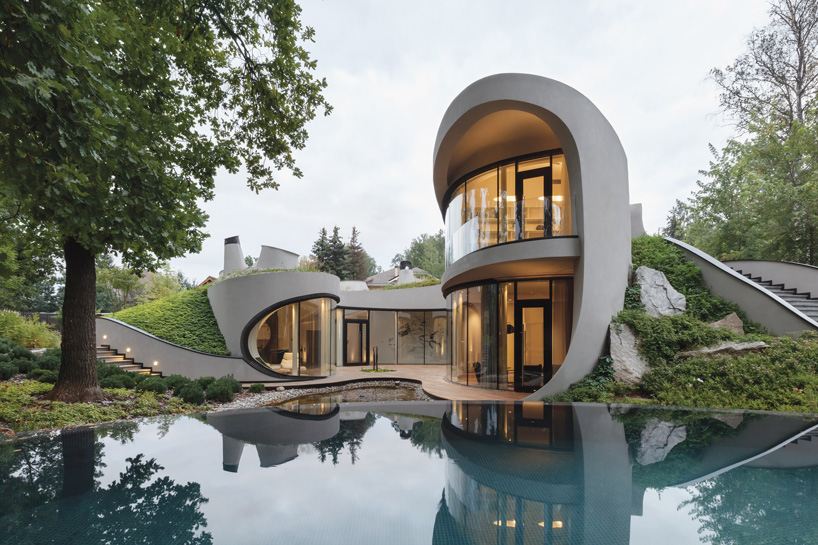Understanding the Collaborative Refine In Between Designers and Designers in Modern Building Projects
The collective process between architects and designers is crucial in modern-day building jobs, as it harmonizes design intent with design expediency. This partnership not only affects the aesthetic and functional aspects of a task however likewise plays an important role in resolving sustainability difficulties. By utilizing effective interaction techniques and leveraging advanced modern technologies, such as Structure Information Modeling (BIM), groups can work more cohesively. Nonetheless, the ins and outs of this collaboration usually existing unique obstacles that can impede progress. Exploring these characteristics reveals understandings that could substantially impact job outcomes and general sector requirements.
The Importance of Partnership
The collective harmony between architects and engineers is necessary for the effective realization of any type of building task. This collaboration unites unique experience and perspectives, allowing the combination of ingenious layout with sensible design solutions. By collaborating, designers and engineers can make sure that a job not just satisfies aesthetic and practical demands however likewise follows security, sustainability, and monetary restrictions.
Cooperation cultivates a common vision, assisting in the placement of objectives and assumptions from the beginning. This positioning is important in attending to prospective difficulties and mitigating dangers that might occur during the project lifecycle. A collaborative method allows for the efficient allotment of sources, maximizing both time and expense.
The significance of collaboration reaches the repetitive process of style and construction, where responses from designers can notify building choices, resulting in more viable and sustainable designs. Alternatively, designers can inspire designers to believe artistically regarding how to attain structural integrity without jeopardizing artistic intent. Inevitably, the collective relationship in between architects and designers is not merely valuable; it is essential to the production of top notch, functional, and cutting-edge built settings that meet the demands of society.
Interaction Techniques and Tools
Reliable communication methods and tools are crucial for cultivating partnership in between architects and engineers throughout the task lifecycle. Establishing clear channels of interaction is necessary to make certain that all employee are straightened with project goals, timelines, and responsibilities. Routine conferences, both in-person and digital, offer chances for stakeholders to talk about progression, address concerns, and make informed decisions.
Making use of task management software application, such as BIM (Structure Details Modeling) platforms, enhances partnership by making it possible for real-time sharing of layout adjustments and technological requirements. These devices facilitate transparency, enabling designers and designers to envision changes and assess their effect on the general job.

Shared Objectives and Job Vision

Establishing shared objectives involves open dialogue and a detailed understanding of each self-control's payments. Architects usually concentrate on design intent, spatial connections, and customer experience, while engineers highlight architectural integrity, systems performance, and conformity with laws (cda architects). When these perspectives are lined up, the outcome is a cohesive job that complies with both imaginative aspirations and technical expediency
In addition, a well-defined project vision promotes responsibility amongst group members, encouraging each individual to take possession of their duty in achieving the desired outcome. Routine check-ins and collaborative workshops can better enhance this dedication, enabling modifications to be made as the job progresses. Inevitably, a shared vision not only improves team effort however likewise elevates the quality of the final deliverable, resulting in successful project completion.
The Role of Technology
Leveraging innovation has actually ended up being important in boosting partnership in between architects and designers. The integration of sophisticated software tools promotes real-time communication and details sharing, enabling groups to function much more successfully and effectively. Building Details Modeling (BIM) stands apart as an essential technology, enabling both engineers and designers to create in-depth 3D versions that encapsulate style intent and architectural honesty. This shared graph decreases misunderstandings and enhances the decision-making procedure.
Moreover, cloud-based platforms allow seamless partnership, enabling job stakeholders to gain access to and update job data from anywhere. This promotes a culture of transparency and accountability, as changes can be tracked and evaluated in real-time. Furthermore, mobile applications further enhance communication, offering on-site teams with immediate access to project requirements and updates.
Arising modern technologies such as fabricated knowledge and equipment understanding are additionally starting to play a function in predictive analysis, aiding groups determine prospective issues before they emerge. Inevitably, the duty of modern technology in architecture-engineering partnership not only improves workflow performances however likewise enhances innovation, bring about even anonymous more successful task end results. By accepting these technological innovations, designers and engineers can make certain a much more cohesive and effective collective process throughout the building lifecycle.
Case Researches in Successful Collaborations
Many case researches illustrate the extensive effect of reliable partnerships in between designers and designers on job end results. One significant example is the partnership on the High Line in New York City, where landscape designers, designers, and metropolitan organizers interacted to transform a deserted rail line into a vivid public park. This multidisciplinary method not just enhanced the visual quality however additionally guaranteed architectural safety and environmental sustainability.
An additional exemplary situation is the layout and construction of the Sydney Opera Home. The collaboration between designer JÃ ¸ registered nurse Utzon and structural engineer Ove Arup exhibited cutting-edge problem-solving. Their partnership permitted the iconic shell-like design while attending to intricate engineering difficulties, inevitably leading to an ageless architectural work of art.
The Burj Khalifa in Dubai better demonstrates the importance of collective initiatives. cda architects. The assimilation of style and engineering competence made it possible for the project team to achieve unmatched heights while adhering to security laws and visual vision
These instances emphasize the importance of communication, trust, and shared objectives. In today's complex building atmosphere, such collaborations are necessary to browsing obstacles and supplying tasks that fulfill their website both practical and visionary goals.
Final Thought
In verdict, the partnership between engineers and engineers is essential for the success of modern-day building projects. Reliable communication strategies, a shared project vision, and the combination of advanced modern technologies are important components that promote this partnership.